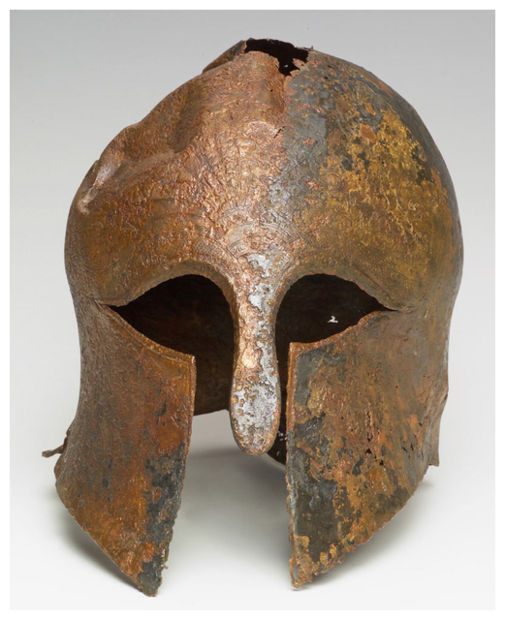At the time the helmet was made, circa 600 B.C., Greek colonies dotted the Mediterranean coast, stretching from the Black Sea to southern France. Even so, there is no evidence of Greek colonies in Israel, indicating the warrior who ventured into Haifa Bay was likely the leader of a group of Greek mercenaries.
This warrior was likely one of Egyptian pharaoh Necho II’s troops, which he sent through Israel accompanied by a fleet of ancient ships. The pharaoh was heavily involved in military campaigns in the region for nearly a decade, operations in which this warrior and his group likely were involved.
“They were not fighting for the Greeks, they were fighting for Egypt,” Sharvit told LiveScience in an interview.
This just popped up on my radar and I had to share. How cool is this? As to the history of this helmet, they speculate that the owner was a Greek mercenary fighting for the Pharaoh Necho II, who knows? Or he could have been a Greek pirate/trader, which was a common practice at that time as well.
On a side note, this is a helmet in the Corinth style, which was a common type of helmet worn by hoplites. They also wore these things tilted back on their head when not fighting, just so they could see well. But when they needed to battle at that moment, they would tilt the helmet forward and put it on correctly to start fighting again. Maybe the guy who owned this thing tilted the helmet back a little too far and it fell off into the drink? lol
The other interesting part about this is that Necho II was the guy that killed Josiah, the king of Judah of biblical fame. If this mercenary was a part of that effort, he more than likely was contracted to be on the naval flotilla that supported Necho’s campaign. (Judah was simply a speed bump for the big battles against the Assyrians)
Who knows and it is all speculation based on the dating of this artifact. The thing I look at is the history of the hoplite in ancient Greece and the societies that produced such incredible warriors back then. Sparta and the Battle of Thermopylae is one example of the type of hoplite forces that the various city-states of Greece produced.
Another famous Greek mercenary was Xenophon and his Ten Thousand– an assembled group of mercenary soldiers hired by Cyrus the Younger. Xenophon even wrote a book about this army and it’s campaign and epic journey called Anabasis. A very famous book that has been used to teach Socratic philosophy, military history of the time, leadership, and governance. It was also the basis to many other books and films, as well as the inspiration to such individuals as TE Lawrence.
I could go on about the numerous other Greek mercenaries and famous hoplites, but I will stop there. –Matt

Covered with gold leaf (now somewhat corroded), this 2,600-year-old bronze helmet was discovered in the waters of Haifa Bay, in Israel. The helmet would have been worn by a wealthy Greek mercenary leader. CREDIT: Photo courtesy Israel Antiquities Authority.
Found: Ancient Warrior’s Helmet, Owner Unknown
By Owen Jarus
28 February 2012
A Greek bronze helmet, covered with gold leaf and decorated with snakes, lions and a peacock’s tail (or palmette), has been discovered in the waters of Haifa Bay in Israel. But how this helmet ended up at the bottom of the bay is a mystery.
The helmet dates back around 2,600 years and likely belonged to a wealthy Greek mercenary who took part in a series of wars, immortalized in the Bible, which ravaged the region at that time. Archaeologists believe that he likely fought for an Egyptian pharaoh named Necho II.
Dredging discovery
The helmet was discovered accidentally in 2007 during commercial dredging operations in the harbor. After it was discovered, conservators with the Israel Antiquities Authority went to work cleaning it and archaeologists began to analyze it.
They discovered that it is very similar to another helmet found in the 1950s near the Italian island of Giglio, about 1,500 miles (2,300 kilometers) away. That helmet has been dated to around 2,600 years ago, something which helped the researchers arrive at a date for the Haifa Bay helmet.